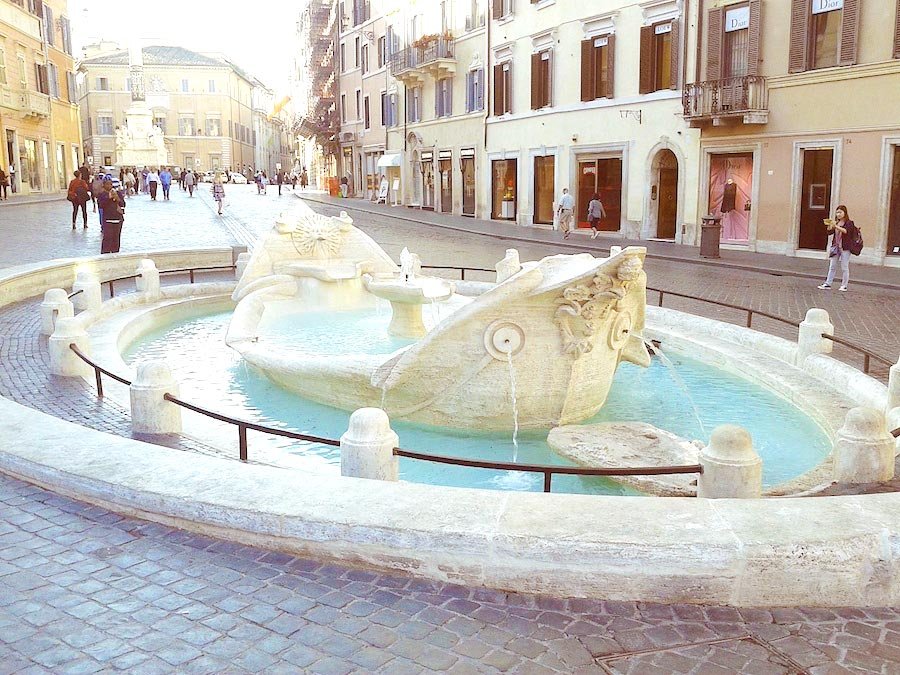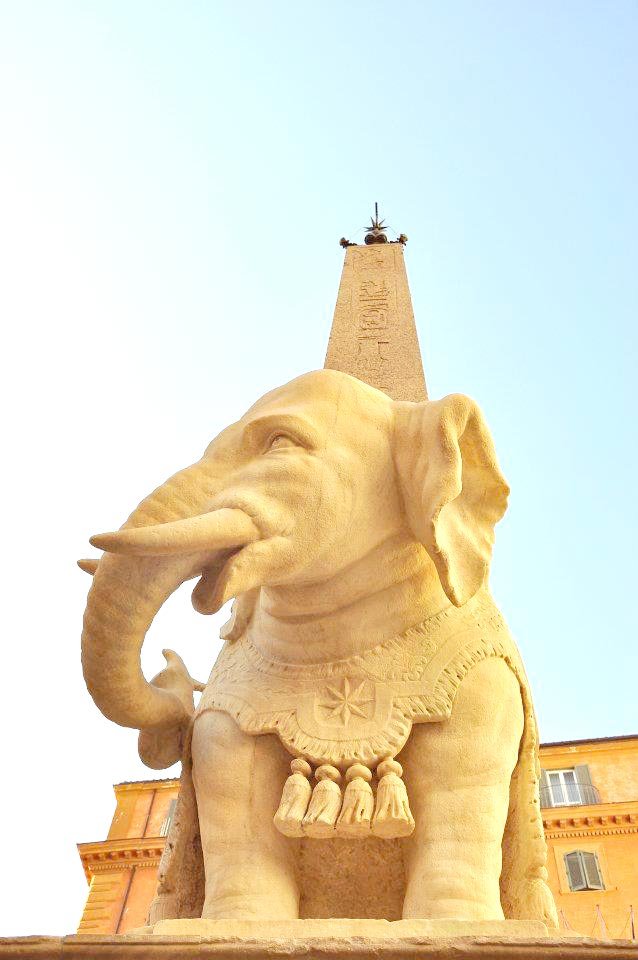Are you a fan of the incredible works of Gian Lorenzo Bernini? Rivers of words have been spent on this incredible artist and on his legendary antagonism with Francesco Borromini.
I’ll explain this genius of Roman Baroque showing you 10 of his most important masterpieces and telling you the most amusing anecdotes about his life.
Would you like to know more? Discover also: The rivalry between Bernini and Borromini explained in 5 images
The youth of Gianlorenzo Bernini
Born in 1598, Bernini was a son of one of the most important artists of that period: his father Pietro, of Florentine origins, was soon called to work at the Santa Maria Maggiore construction site in Rome.
Bernini’s life took place for the most part among the construction sites where his father worked. It, therefore, grew among the great architects and sculptors of the previous generation, learning and training on their work.
The first works of Bernini that had great fame are the magnificent sculptural groups of the Borghese gallery, Aeneas and Anchises and The Rape of Proserpine, which he carved between the ages of 21 and 24, the David but also the splendid Apollo and Dafne, dating back to 1625.

Gianlorenzo Bernini maturity
Bernini’s career was bright and full of great satisfaction: he took inspiration from Hellenistic art, from Michelangelo, but the baroque style can be seen in all his works. Bernini often merges architecture, sculpture and even painting to create a unitary and harmonious whole.
Bernini’s most famous works include monumental fountains such as the Barcaccia in Piazza di Spagna, the splendid Fontana dei Quattro Fiumi in Piazza Navona, the Fontana del Tritone and that of the Bees in Piazza Barberini.
There are also many churches in Rome designed by Bernini, from Sant’Andrea al Quirinale to the colonnade of Piazza San Pietro plus his canopy and the altar of the Vatican basilica. But also the staircase of Palazzo Barberini, the Chigi Chapel in Santa Maria del Popolo, the monumental tomb of Alexander VII in San Pietro and the list goes on almost interminably … in short, in Rome, wherever you turn around, you can find an intervention of Bernini!
But enough with the preambles, here are the 10 works of Bernini most significant and representative of his art!

1 – Bernini and the colonnade of San Pietro
When one thinks of Bernini one of the first things come to mind is the colonnade of St. Peter’s in the Vatican.
Made to balance the façade of Maderno, the colonnade of St. Peter’s in the Vatican has an oval shape and is composed of three rows of columns. The colonnade is a masterpiece of architecture and precision.
There are two points, inside the colonnade, from which it is possible to observe the colonnade as if it were composed of a single row of columns: the perspective studied by Bernini is so perfect that the other columns are completely hidden from those of the first row.
The two observation points are marked by a marble disk with the words: center of the colonnade!

2 – The Saint Bibiana
This was the first work of bernini with a sacred theme and is preserved in the church of the same name in Rome.
The saint is represented with the palm of martyrdom in her hand: the face reclined on one side has an ecstatic expression that contrasts with the lively movement of the dress.
At his side, there is a column because, according to legend, the saint was tied to a column and flogged to death with bundles of leaded rods. Her remains were found under the current church.

3 – Apollo and Daphne at the Borghese gallery
In this sculpture Bernini takes back the myth of Apollo and Daphne and he represents the moment when the god grabs the nymph who is about to become a laurel.
The metamorphosis of Daphne is taking place under the disbelieving eyes of Apollo, in fact, the hands of Daphne are turning into branches and leaves while her legs take the form of trunk and roots. A perfect example of how Bernini was able to give plasticity to marble.
It is said that the marble leaves are so thin that if you blow on them, they vibrate.

4 – The ecstasy of Santa Teresa in Santa Maria della Vittoria
The work represents an angel in the act of piercing the saint. The description that the saint herself gives of her ecstatic experience is very vivid and the sculpture represents her perfectly.
This statue is located in the Cornaro chapel in Santa Maria della Vittoria in Rome. The church is situated close to Piazza della Repubblica and can be visited free of charge.

5 – The Fountain of the Four Rivers
One of the most famous fountains in Rome is the fountain of the four rivers of Bernini.
The fountain of the four rivers is located in Piazza Navona and represents the four rivers of the world, one for every continent: the Ganges for Asia, the Danube for Europe, the Nile for Africa and Rio de la Plata for the Americas.
The four huge statues are located around a rock, dug in the center, on which stands an ancient obelisk (did you know that Rome is the city with the most obelisks in the world?)
All around there are the elements that characterize every river: plants, animals and treasures. For example, the Nile has its head covered because its sources were not known.
Curiosity: If you’re wondering why the crocodile of the fountain of the four rivers is so strange, it’s because Bernini had never seen one so he gave it the appearance of a big lizard with “armor”.

6 – The Triton fountain in Rome
Among the most beautiful works by Bernini is certainly the Triton fountain.
The fountain is located in Piazza Barberini in Rome. A few years ago the fountain was restored and lost most of the incrustations and mosses that gave it an even more “marine” look.
To learn more: The Triton Fountain is a true masterpiece of Rome: 5 photos and some anecdote to discover it!

7 – The rape of Proserpine at the Borghese gallery
This sculpture is inspired by another story of mythology and in particular tells the kidnapping of Proserpina, daughter of Jupiter and Ceres, by Pluto.
The realization of the hands of the god is particularly realistic: they seem to sink into the skin of Proserpina as if it were really made of flesh and bone.
The rape of Proserpina by Bernini is characterized by some details that underline the genius of the artist. On the face of the young woman is visible the flow of a tear while the muscular back of the god Pluto is characterized by a neo carved in marble.
Read more about the works of the Galleria Borghese here!

8 – The Barcaccia in Piazza di Spagna
The barcaccia is a marsterpiece.
It is located on the bottom of the Trinità dei Monti staircase in Piazza di Spagna, and Bernini has had to face a big problem: the water pressure was not enough for the realization of the fountain.
For this reason, the fountain was built by digging in the ground in order to guarantee a sufficient supply of water. It was one of the first works by Gianlorenzo Bernini, made together with his father Pietro.

9 – The elephant by Bernini
In front of Santa Maria sopra Minerva, there is another of the obelisks of Rome, supported by an elephant by Bernini.
The obelisk was brought from Egypt to the times of Emperor Domitian, while the elephant dates back to 1667 and has a funny meaning: it has the tail moved to the left to better show the “back” to the convent behind it.
One of the many provocations that the artist enjoyed putting in his works.

10 – Sant’Andrea al Quirinale
The church of Sant’Andrea al Quirinale summarizes the concept of Bernini’s baroque art.
It is a perfect synthesis of architecture and sculpture inextricably combined to create an almost theatrical scene to which the faithful is called to assist. I
It is a small building but it seems big thanks to the skill of the artist. The white and gold surround the visitor creating an ascending rhythm that rises towards the natural light that filters behind the altar and arrives at the saint who is hired in the sky, just above the altar.
Very beautiful.

Any comment about Bernini?
Which are the works of Bernini that you prefer? Which would you have added?
Let me know in the comments.
